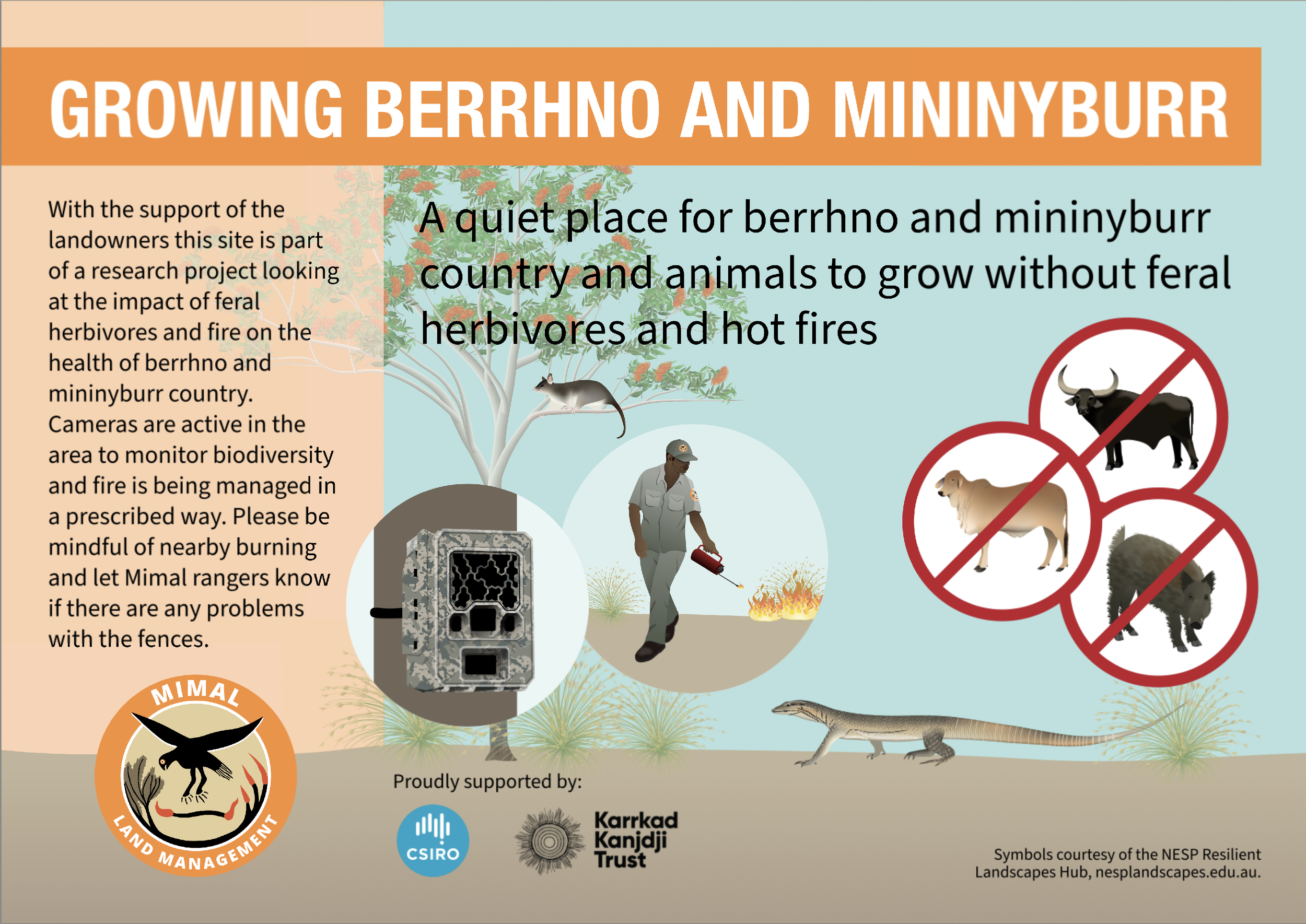
Growing Berrhno &
Mininyburr Project
Project outline:
This Project is a collaboration between Mimal and CSIRO that seeks to build a better understanding of the environmental impact of large feral herbivores (primarily buffalo, horses and donkeys), on the biodiversity of the tropical savannas of northern Australia. Specifically, the GBM Project will investigate how disturbance from large feral herbivores (including interactions with fire) influences habitat structure within savanna woodland and forests, including features such as cover and shelter which are critical resources for declining wildlife.
The GBM Project will i) use feral herbivore exclosures to experimentally investigate the impact of feral herbivores and fire on habitat condition in the tropical savannas of northern Australia, ii) explore and develop the capability of LiDAR technology and satellite data to be used as tools by land managers for monitoring biodiversity in the tropical savannas, and iii) provide an opportunity for Indigenous rangers to engage with and co-develop the use of novel remote-sensing tools for biodiversity monitoring.
Links to Mimal Healthy Country Plan:
Berrhno (Dalabon) and Mininyburr (Rembarrnga) are the tall forests and the dry low woodland. They each have their own special plants and animals that need us to keep this country healthy if they are to survive and breed. When the right trees are flowering, sugarbag are filling up their nests. When the right grasses are there, kangaroos are getting fat. Emus and people are finding the right fruits.
Berrhno and Mininyburr woodland and forest are a high priority asset listed under the Mimal Healthy Country Plan 2017-2027. The negative impacts of large feral herbivores were listed as one of the current main threats to this asset.
In 2023 after extensive consultation with the Mimal board and Traditional Owners, three 25ha large feral herbivore exclosure fences were built within the Mimal Berrhno and Mininyburr woodland and forest.
Project methodology:
Biodiversity monitoring
Since 2022, before the fences were built, Mimal and CSIRO began biodiversity monitoring within the fenced and neighbouring areas. Biodiversity monitoring within the GBM project area includes vegetation surveys, soil sampling, pitfall trapping, remote wildlife cameras, phenocams, ground-based LiDAR surveys and nestbox surveys.
LiDAR surveys
LiDAR (Light Detection and Ranging) is a remote sensing tool that uses a pulsed laser to measure the distance between two points, quickly building a three-dimensional image of the structure of the scanned area (known as a point cloud). Ground-based LiDAR surveys are an important means to quantify fine-scale changes in habitat structure. The engagement of the Mimal rangers with this novel, advanced technology provides an exciting opportunity for the Mimal rangers to become leaders in the use of this technology for monitoring habitat condition in northern Australia. The GBM project will develop the capacity of the Mimal rangers to undertake independent LiDAR surveys, including learning how to set-up and conduct on-ground LiDAR surveys, and how to process and interpret LiDAR-derived data.
Conclusion:
Through the GBM project Mimal hopes to demonstrate and quantify the impact of feral herbivores within the Berrhno and Mininyburr woodlands and forests, while simultaneously building the capacity for Mimal rangers to monitor the biodiversity within these areas. The knowledge gained through this project will inform Mimal’s land management priorities and practices into the future.
Project title:
Growing Berrhno and Mininyburr Project
Project lead/Principle investigator:
Dr. Alyson Stobo-Wilson, CSIRO
Project partners and funders:
CSIRO, Karrkad Kanjdji Trust





